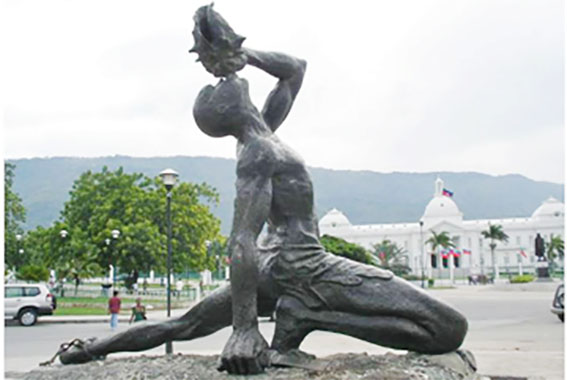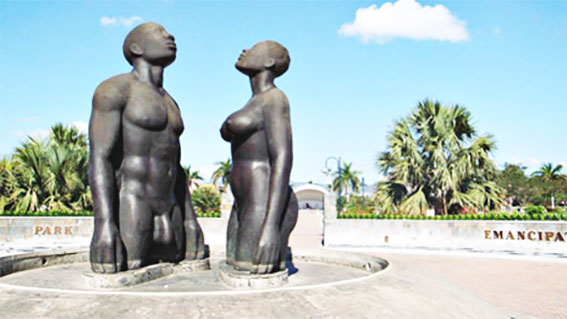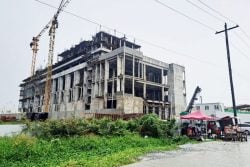 Resistance. Fortitude. Resilience.
Resistance. Fortitude. Resilience.
Emancipation Day is around the corner. Without fail every year on the day and during that period, I catch myself doing a quick self-assessment. I ask myself some variation of, will they be proud to have endured to allow me my existence? I think of the ancestors who trod on the land where I now live and I wonder about the ones before them. Who are they? What are their stories? What did they not tell, so as to forget? What did they tell, lest we forget? But, we have managed to forget.
I think of what it must have meant to forget: Massa. Massa’s wife. Massa’s children. Being made a commodity. Being born to be a tool in a perverse system of capitalist exploitation. But what if you were massa’s exploited or privileged child? I wonder about the Scotsman from whom I inherited my name and that woman. I know his name but not hers. Was it a union by her will? How old was she when…? Were his children treated as (his) children? I wonder about the lives of the women whose names I do not know …will never know. I wonder, how might they have resisted? I pray my women folk knew to malinger, to use natural biological occurrences to earn needed rest. I wonder, was the work too strenuous for that natural occurrence? I worry they may have been punished, nonetheless.
 They must have resisted! Otherwise, I would not be here. He must have resisted, I tell myself. In the rumble of my mind, I insist, she must have resisted. I want to forget but I know I cannot. I see many have forgotten. Those were the old times. Past times. Not-now times.
They must have resisted! Otherwise, I would not be here. He must have resisted, I tell myself. In the rumble of my mind, I insist, she must have resisted. I want to forget but I know I cannot. I see many have forgotten. Those were the old times. Past times. Not-now times.
Haiti is occasionally on our minds. Her troubles. So many troubles. So much violence. So much death. So much poverty. A humanitarian crisis. Violence, political instability and insecurity marring the dreams that fueled resistance, yet again. Le Nègre Marron (the Black Maroon) (1967), the picture of resistance, is perhaps the earliest monument to emancipation in the Caribbean. Commissioned by Francois Duvalier, the monument was unveiled in Port-au-Prince, Haiti, many years ahead of the centenary of Bois Caïman (Bwa Kayiman). Bois Caïman was the Voodoo (alternatively Voudou or Vodun) ceremony held in August 1791 which is considered the starting point of the Haitian Revolution.
In underscoring the importance of remembering, I extract from an article I wrote titled “The Sable Venus and Redemption Song: Unveiled” on July 31, 2003 […] Laura Facey’s Redemption Song comprises a pair of monumental figures whose forms attempt to reverse extant racialised imprints on Africa-descended (Jamaican) bodies. Sited in Emancipation Park, Kingston, Jamaica, the duo towers over visitors; the male stands at 11 feet while the female stands at 10 feet. Together they are a pair of modified Classical Western nudes. Neither assumes a normative classical gendered stance; he is not heroic and she is neither sensual nor sexual. Instead, Redemption’s figures stand upright within a pool of water, are visible from their thighs upward, have their arms rigid to their sides and their heads tilted backward. They gaze up to the sky with serene countenances unaware of their and their companion’s state of undress. They stand in dutiful obedience, submission and anticipation of something not of the earthly realm.
Redemption, however, offers oppositional narratives to notions of black hyper-masculinity bound up in strength, action and virility and hyper-femininity bound up in a sexualised body, gestures and awareness. Facey’s figures do not embody these tropes although she makes no effort to conceal their bodies through simulation of clothing, tools or other accoutrements. Instead, and as a consequence of the absence of adornment, the figures lack markers of temporality (markers of time). This absence serves to free them from a specific historical situation. As a result, the figures are liberated from scripts of denigration; although reproductively well-endowed, the male is not the young buck purposed for siring massa more children to augment the enslaved population, and although suggesting health and vitality, the female is not the libidinous ready-to-be-sexually-consumed progenitor of massa’s increase. Indeed, while this exploitation is hinted at because of the bodies’ nakedness coupled with physiognomic association with African-ness, apparent reproductive health, and their siting in Emancipation Park, such exploitation is not explicitly invoked.
Overlooked in the public debates is Redemption’s hint at African theological worldviews. While the site of the work and the artist’s widely-circulated intentions position the work at the cessation of slavery, the work does recall the arrival of the thousands of African men, women and children in the ‘New World’ after being trafficked across the Atlantic Ocean. One senses some of their loss and resolve to survive in the unfamiliar world before them after enduring the horrors of their journey. Redemption’s figures turn their gaze skyward, perhaps to Onyame or Nyame – Akan for God (Majeed, 2014), Chukwu – the Igbo Supreme God (Metuh, 1973), Olodumare – the Yoruba Supreme God, or another/other supreme beings consistent with their ethno-cultural worldviews. Facey’s erasure of the indignity and horrors of the journey reminds us that individuals with spiritual worldviews were forced upon ‘New World’ shores, and that these worldviews were a source of strength for both survival and subversive action to insist on the recognition of their humanity.





